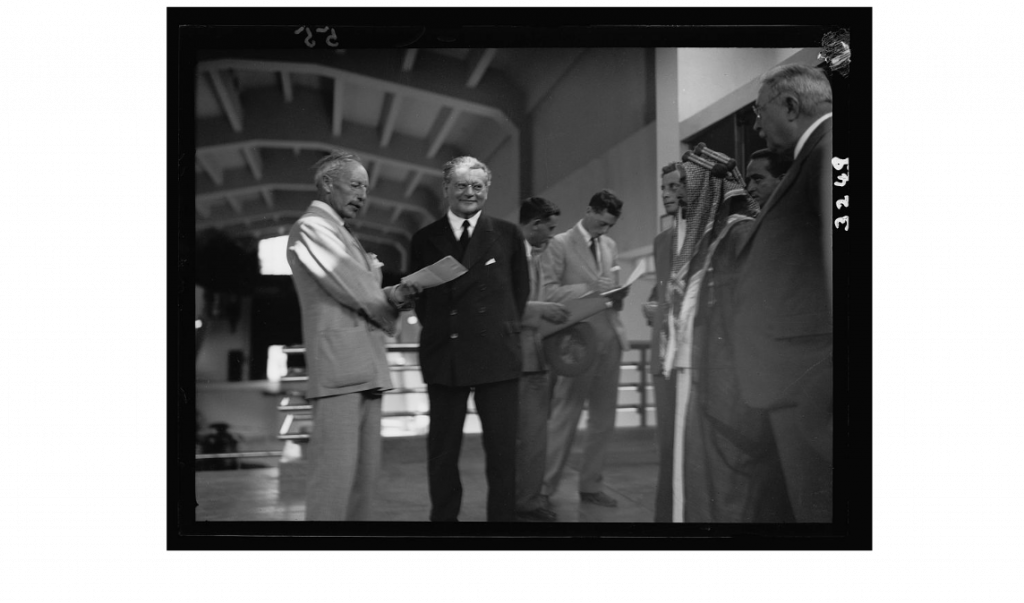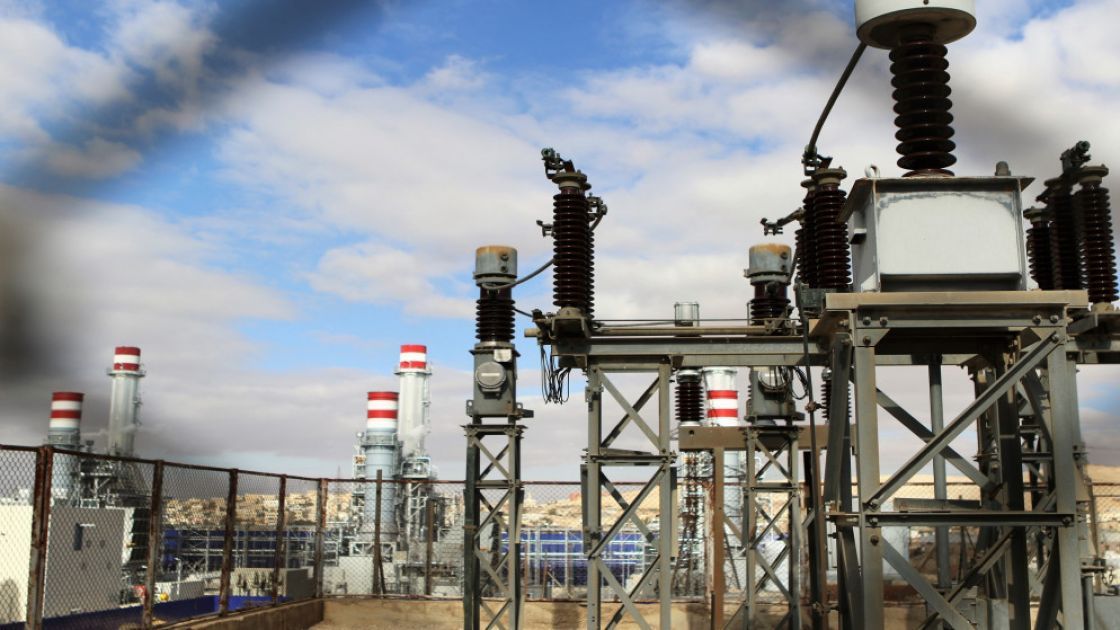- Articles
- Posted
The “Arab” Gas Pipeline… How Does Jordan Produce its Electricity?
A set of Kassioun articles during the past weeks dealt with the issue of the “Arab” gas pipeline (you can refer to them via the following links 1, 2, 3, and 4). However, these articles did not ponder enough at the other aspect of the same project, which is related to the transmission of electricity from Jordan through Syria to Lebanon.
Kassioun’s previous articles focused mainly on the aspect related to the transportation of gas in its natural (non-liquefied) form, and then using it for the production of electricity in the Lebanese Deir Ammar plant. Here, we focus more on the part of the project related to producing electricity in Jordan and exporting it to Lebanon and other countries, in order to ask about the source of the Jordanian “electricity surplus”.
A quick historical overview
The history of “energy relations” between the authorities of Jordan and the Zionist movement dates back to many years before the declaration of the Zionist entity, extending through Peres’ “New Middle East” project, all the way to the present. There is no capacity here to expand on this point, but we think it is useful to have a glimpse of this history in the background when dealing with emerging projects. In this context, we mention the following:
- After the conference held by Churchill between March 12 and 14, 1921 in Cairo (and he was at the time the Minister of the Colonies), according to which he decided to give Iraq to King Faisal bin Al Hussein, who had fled from Syria, and the Emirate of Transjordan to his older brother Abdullah, the latter did not like the division, and began to secretly communicate with the Zionists in an effort to get better conditions for himself. What concerns us in this context is that the mediator between him and the Zionists was none other than Pinhas Rutenberg, founder of the “Jewish Legion” and one of the founders of the Haganah, and the owner of the exclusive British enterprise in the Palestinian (later “Israeli”) Electricity Company, whose work extends to parts of eastern Jordan. Furthermore, the person who financed him in 1919 to found this company was Baron Edmond de Rothschild (the text of the 1917 Balfour Declaration begins with the following words: “Dear Lord Rothschild”, and this Lord is Edmond himself). In other words, the “intermediary” role of the energy sector, the electricity in particular, is not new, but dates back to 1921, i.e., exactly 100 years ago. It is not surprising, then, that this “intermediary” has developed its tools over an entire century.
- On March 5, 1927, Hassan Abu al-Huda, head of the Jordanian government at the time, accepted the enterprise of Project Rutenberg.
- In June 1933 Prince Abdullah bin Sharif Hussein participated in the inauguration of the Rutenberg project.
- Article 19 of the Wadi Araba Treaty between Jordan and the Zionist entity, signed on October 26, 1994, includes the following: Energy: 1- The Parties will co-operate in the development of energy resources, including the development of energy related projects such as the utilization of solar energy; 2- The Parties, having concluded their negotiations on the interconnecting of their electric grids in the Eilat-Aqaba area, will implement the interconnecting upon the signature of this Treaty. The Parties view this step as a part of a wider binational and regional concept. They agree to continue their negotiations as soon as possible to widen the scope of their interconnected grids.
- It is known that in 2016 Jordan signed an agreement to import natural gas from “Israel”. The agreement stipulates that Jordan will be supplied during 15 years with 45 billion cubic meters of natural gas, with a total value of up to $10 billion. It is also known that the process of pumping gas began last year. We add here that the party that signed the agreement from the Jordanian side is the Jordanian Electricity Company, which is the same company that is supposed to supply Lebanon – through the Syrian grid – with a capacity of 200-250 megawatts (equivalent to a maximum of two additional hours of electricity in Lebanon).

Figures and Calculations
- According to official Jordanian statistics, the total electrical energy produced in Jordan in 2020, amounted to approximately 19.19 TWh, of which about 18.86 TWh was consumed, meaning a surplus of 0.33 TWh.
- The part of the project to supply Lebanon with gas and electricity that is under discussion, includes talk about providing it with electricity produced in Jordan with a capacity of 200-250 megawatts (1.75 to 2.19 TWh). In other words, if we rely on the 2020 figures, exporting the assumed amount of electricity to Lebanon will cause a deficit in Jordan ranging between 1.42 and 1.86 TWh) or (7.4 to 9.7%) of the total production of 2020.
- Looking at the official statistics for 2020 for the export and import of electricity in Jordan, we will find that the export amounted to 381.2 GWh, while the import amounted to 380.6 GWh. Meaning, the net Jordanian electric export in 2020 is 0.6 GWh (which if it had been exported to Lebanon at the time, it would have added 12 minutes per day of electricity in Lebanon).
- According to statements by the Jordanian Minister of Energy last year, and the clarifications that followed those statements (which were controversial statements at the time), Jordan has capabilities to produce energy that exceeds the needs of domestic consumption. In other words, the installed capacity is not fully activated because it has become, “according to the clarifications”, greater than the needs of the Jordanian domestic market.
- However, whatever the value of the installed electrical capacity in Jordan (and since the bulk of the generation plants are conventional generation plants, 80% of production), the main determinant of the generation process will be the “primary energy” that these plants need in order to produce electricity. In this context, Ahmed Hendam, head of the Renewable Energy Engineering Department at Jordan’s Jadara University, said that Jordan imports most of its fuel needs from abroad. “Only 4.7% of primary energy is produced domestically”.
- With regard to electricity in particular, its production consumes 39% of the total primary energy consumption in Jordan, and 88% of the electric energy produced in Jordan in 2020, was produced using imported fuel.
- During the first five months of this year, Jordan imported crude oil and other oil derivatives, with a value of $855.5 million, meaning that the average import during a year may reach nearly $2 billion. (During the first third of this year, the Jordanian general debt increased by 2.7%).
- Roughly about $686 million was paid over the course of a year, as the price for imported primary energy used to produce electricity in Jordan.
- Jordan’s agreement with “Israel” includes importing $10 billion worth of natural gas during 15 years, or about $666 million annually, and the signing party is the Electricity Company, and the main use of natural gas in Jordan is to produce electricity.
- We had asked in a previous article: Has science developed enough to manufacture filters that identify the DNA of natural gas coming from “Israel” and isolate it from that coming from Egypt? Now we add another question: Has science developed enough to isolate the electricity produced with “Israeli” gas, from that produced by other fuels? More clearly: Is the image that Jordan presents itself in as a country that seeks to transform into a regional exporter of electricity based on the production of electricity through gas coming from “Israel”? We had made it clear in a previous article that if all of the Egyptian gas surplus is exported to Lebanon, and it is hardly enough for it, is too low to be a basis for transforming Jordan into a regional center for the export of electricity.

Summary of Previous Articles
Here we present a quick summary of some of the basic findings of previous Kassioun articles about the “Arab” gas pipeline (1, 2, 3, and 4), keeping in mind that this summary does not in any way suffice nor dispense with going back to the articles:
1- The line’s connection in two places (Egypt’s Al-Arish and Jordan’s Mafraq) with the Zionist entity, and the declared agreements between Egypt and “Israel” on the one hand, and Jordan and “Israel” on the other, ensure that “Israel” could use the same line to pump its “gas”, that is, the stolen Palestinian gas.
2- The line running along the entire western and eastern borders of occupied Palestine, places the entire line under “Israeli” harassment, if we assume that “Israel” is not a player and a beneficiary, directly or indirectly, from the line.
3- Egypt does not have enough surplus natural gas to qualify for playing the role of a regional gas exporter. That is in addition to the fact that the reality of the situation says that it still imports from “Israel” through the Ashkelon-Arish line. Moreover, it does not define its role as revolving around the export of gas, but rather in being a country that has the necessary infrastructure for transportation and liquefaction (this was expressed by the Egyptian Minister of Petroleum and Mineral Resources in a TV interview on September 10th). Jordan also imports gas from “Israel” through the Haifa junction line.
4- The quantities of gas that are being talked about to be delivered to Lebanon, will contribute, at best, to an increase in electricity connectivity by 3.5 hours.
5- The American green light; the World Bank’s cooperation with the project; the presence of Egypt, Jordan, “Israel”, and the US in the “Eastern Mediterranean Gas Forum”; and Bennett’s visit to Egypt recently; in addition to the normalization agreements and Washington’s withdrawal trend from the region and the previous calls for an “Arab NATO”, In addition to the project that should not be forgotten (the Peres project, which he discussed in his book The New Middle East), and other indicators, raise the level of “suspicions” about the project, and make them circumstantial clues and evidence about the link of the project as a whole with major regional arrangements in which the issue of energy connectivity plays the role of one of the foundations of an integrated path that seeks to integrate “Israel” within the region in a manner that serves to secure its continuity away from the laws of international legitimacy on the one hand, and in a manner that serves, on the other hand, to fill the American vacuum and keep the region in the orbit of dependency, backwardness, and crises.
“Electricity “Surplus” in Jordan 2020”
- According to official Jordanian statistics, the total electrical energy produced in Jordan in 2020, amounted to approximately 19.19 TWh, of which about 18.86 TWh was consumed, meaning a surplus of 0.33 TWh.
“12 Minutes”
- Looking at the official statistics for 2020 for the export and import of electricity in Jordan, we will find that the export amounted to 381.2 GWh, while the import amounted to 380.6 GWh. Meaning that the net Jordanian electric export in 2020 is 0.6 GWh (which if it had been exported to Lebanon at the time, it would have added 12 minutes per day to electricity connectivity in Lebanon).



